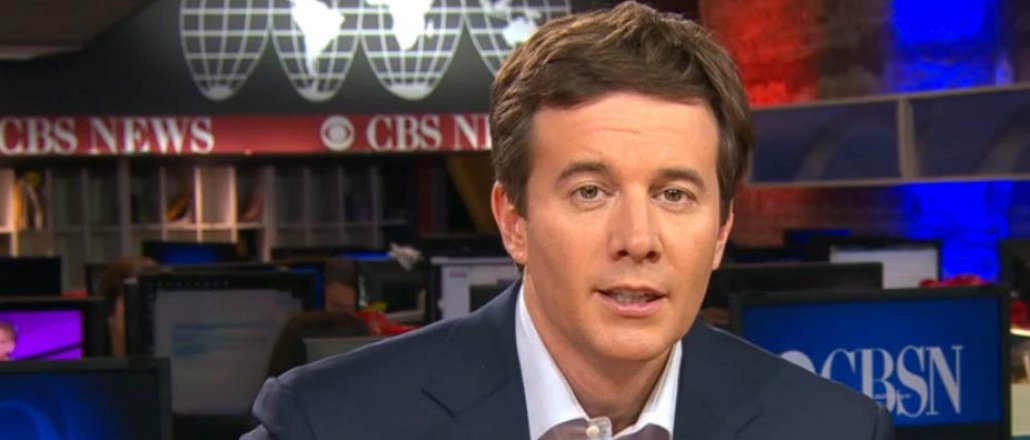Save 50% on a 3-month Digiday+ membership. Ends Dec 5.

One benefit of having a 24-hour news network that’s only available on digital platforms is the ability to adapt and program content based on what viewers want.
Last November, CBS News launched CBSN, a free, ad-supported streaming news network available online, on mobile and connected TV. Every weekday, CBSN provides 15 hours of live content, which includes anchored interviews, roundtable discussions and breaking-news reports, as well as content from some CBS shows like “CBS This Morning” and “Face the Nation.” On weekends, the amount of live content varies based on the news cycle but is generally less than weekdays. (When CBSN is dark, the stream generally features reruns of that day’s content.)
It’s a lot of content to air every day. To get people to actually watch it, CBS News pulls from its well of viewership data. For instance, CBSN viewers are currently very interested in next year’s presidential election and are eager to follow each debate whether CBS is broadcasting that debate or not. In fact, even if CBS is not hosting a debate, CBSN still sees noticeable spikes in traffic to its debate coverage.
“We were focused on analytics from the start, but as we’ve grown, we have access to more information on what drives demand and loyalty,” said Christy Tanner, svp and gm of CBS News Digital.
The data has also helped CBS News strategize what content to promote on its social channels. Going back to the debate example, when looking at overnight numbers on the Sunday after the debate, CBS News saw that all six debate segments had generated an equal number of streams. And so CBS News promoted all six videos across its social channels to feed that “sustained interest,” said Tanner.
Beyond the debate, the other big story of the past week was the terrorist attacks in Paris. CBSN has been providing consistent coverage of the news and the fallout, but it has also been monitoring its social platforms to understand what its viewers were interested in. For instance, the outlet noticed a lot of users were commenting on how the Lebanon bombings that happened prior to the Paris attacks did not receive as much interest from the news media. “We responded to those concerns by providing additional coverage while also pointing people to the coverage that had already been done,” said Tanner.
CBSN also offers a different user experience depending on the platform. For instance, it finds users are more willing to watch the live stream on its TV apps, so it offers the feed as soon as a user enters the app. On mobile, where users tend to want to watch individual clips, the live feed needs to be clicked on to watch.
Ad position: web_incontent_pos1
Another way data is influencing CBSN content is in the content presentation itself. Per CBS News, the average age of a CBSN viewer is under 40. The idea, then, was to be a little less stuffy and uptight on CBSN. Not every anchor wears a suit and a tie and most of the time hosts and guests are standing instead of seated behind a desk.
These may seem superficial, but it was a conscious decision by CBS News to differentiate CBSN in the world of 24-hour news. “They’re stylistic choices that telegraph that this is a different style of journalism for an audience whose style is different from the generations who came before,” said Tanner. “And we’ve seen it in the response, both in terms of numbers and who’s watching.”
And viewership has been growing. CBSN had its best seven-day period starting Friday, Nov. 12, receiving 3 million unique viewers. The spike can be attributed to CBSN’s coverage of the Paris terrorist attacks and its live broadcast of the most recent Democratic debate on Nov. 14. But CBS News says it sees gradual increases in base viewership after every spike related to a major news event or political debate.
More in Media

What publishers are wishing for this holiday season: End AI scraping and determine AI-powered audience value
Publishers want a fair, structured, regulated AI environment and they also want to define what the next decade of audience metrics looks like.

Digiday+ Research Subscription Index 2025: Subscription strategies from Bloomberg, The New York Times, Vox and others
Digiday’s third annual Subscription Index examines and measures publishers’ subscription strategies to identify common approaches and key tactics among Bloomberg, The New York Times, Vox and others.

From lawsuits to lobbying: How publishers are fighting AI
We may be closing out 2025, but publishers aren’t retreating from the battle of AI search — some are escalating it, and they expect the fight to stretch deep into 2026.
Ad position: web_bfu